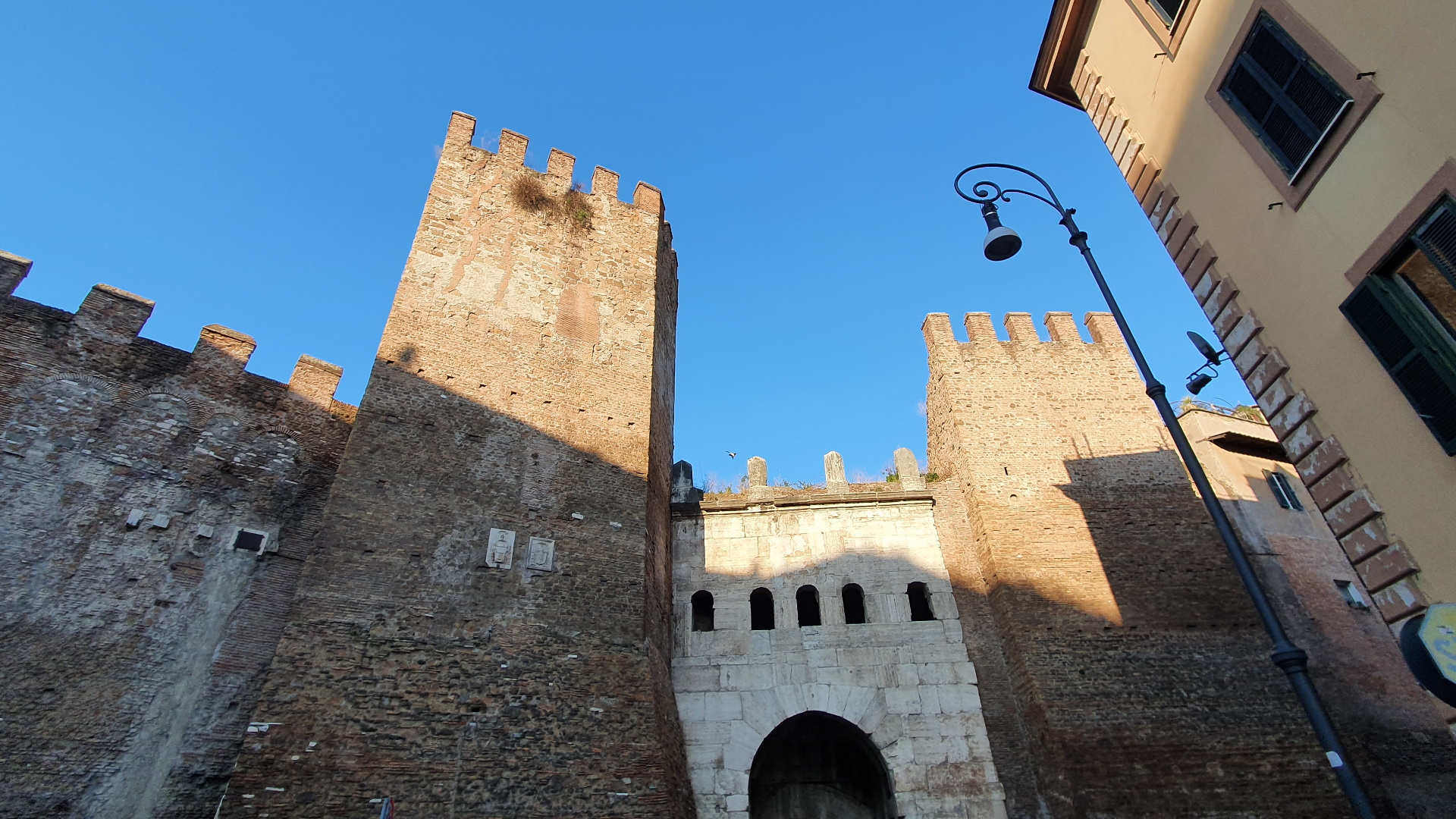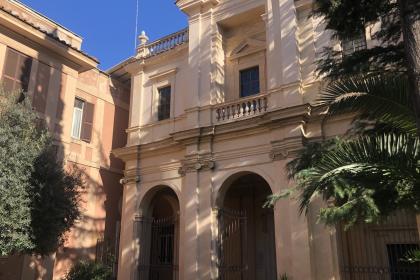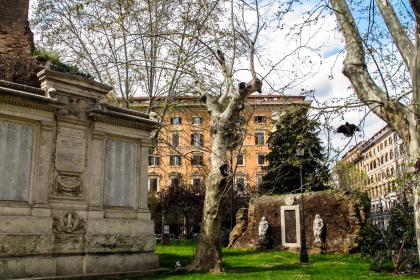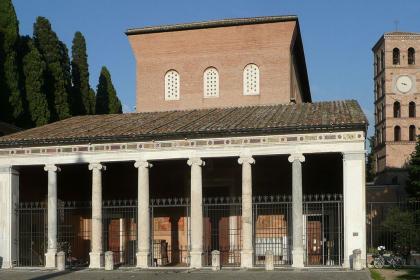
La Porta Tiburtina ou Porta San Lorenzo est une porte d'entrée dans les murs d'Aurélien de Rome, par laquelle la Via Tiburtina sortait de la ville. À l'origine, il s'agissait d'un simple arc monumental construit à l'époque augustéenne (5 avant Jésus-Christ) pour permettre à un groupe d'aqueducs (Aqua Marcia, Tepula, Iulia) de passer au-dessus de la Via Tiburtina. Entre 270 et 275, l'arc a été intégré aux remparts.
Lorsque l'empereur Honorius a restauré et renforcé les murs (401-402), une nouvelle entrée a été ajoutée devant l'ancienne, détruite plus tard par Pie IX en 1869. De cette manière, l'ensemble de la structure présente une double apparence architecturale : l'aspect romain républicain à l'intérieur et l'aspect extérieur avec des créneaux et des tours. En outre, la base de la porte extérieure est plus haute d'environ un mètre et demi que la base de l'arc augustéen et son ouverture n'est pas symétrique à cette dernière.
L'arc érigé par Auguste, qui forme aujourd'hui le côté intérieur de la porte et se trouve à un niveau légèrement inférieur à celui de la rue actuelle, est entièrement en travertin et en excellent état de conservation, avec des pilastres toscans et des clés de voûte décorées de bucranes.
Le grenier est traversé par les trois aqueducs et porte trois inscriptions. Celle du haut, sur le canal Aqua Iulia, date de l'année de construction de l'arc. Au milieu, sur le canal Aqua Tepula, il y a une inscription qui remonte à la restauration de Caracalla en 212. Sur le canal inférieur, celui de l'Aqua Marcia, se trouve l'inscription célébrant la restauration ordonnée par Titus en 79. De l'autre côté, on trouve l'inscription d'Honorien qui commémore l'agrandissement des murs et le nom de Flavius Macrobius Longinianus, préfet de Rome en 402, en tant que maître d'œuvre des travaux.
Église Santa Bibiana

 Condividi
Condividi
Piazza Vittorio Emanuele II

 Condividi
Condividi
The heart of the multi-ethnic Esquilino district
Basilique de San Lorenzo fuori le Mura

 Condividi
Condividi
Informations
 Condividi
Condividi
Location
Pour connaître tous les services d'accessibilité, visitez la section Rome accessible.











































